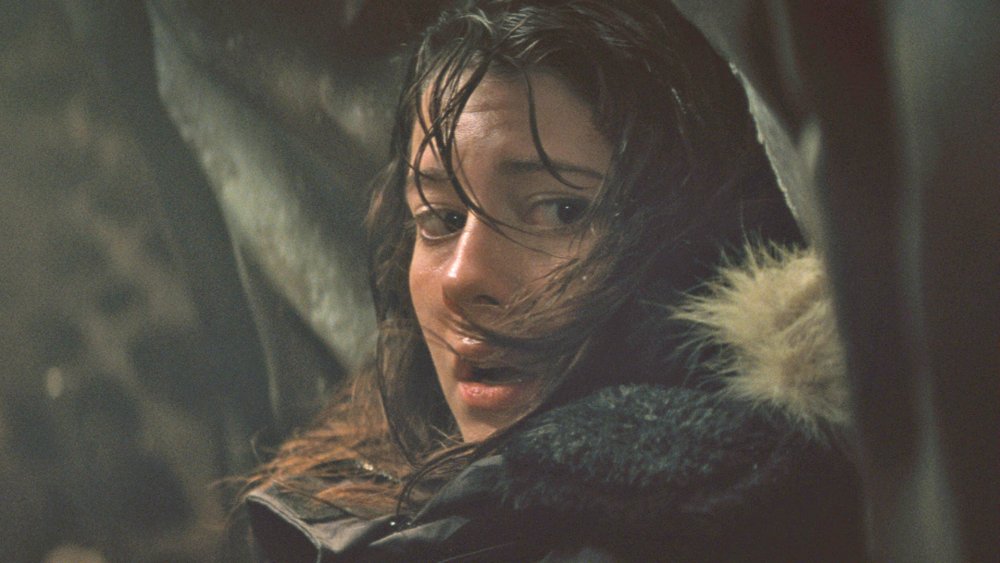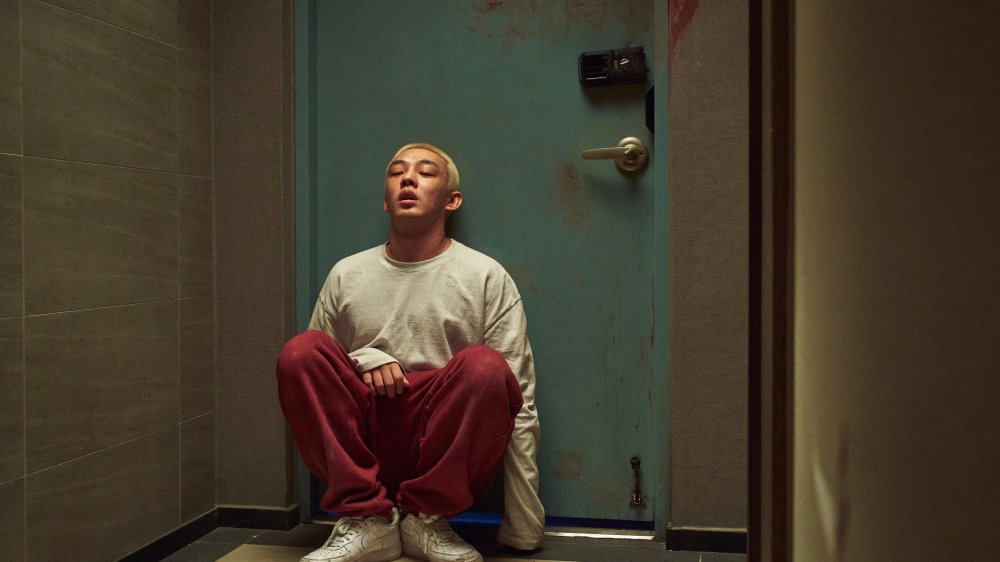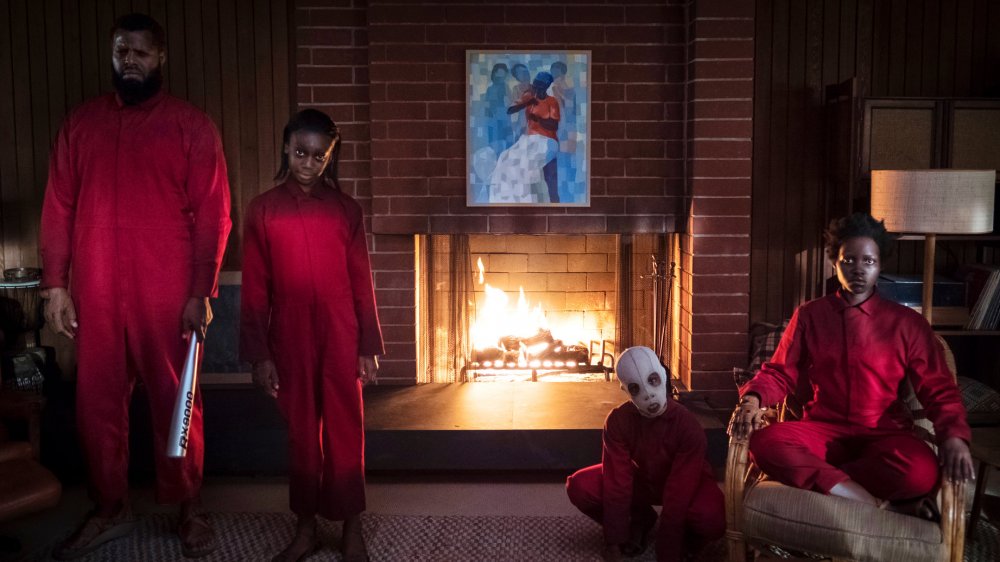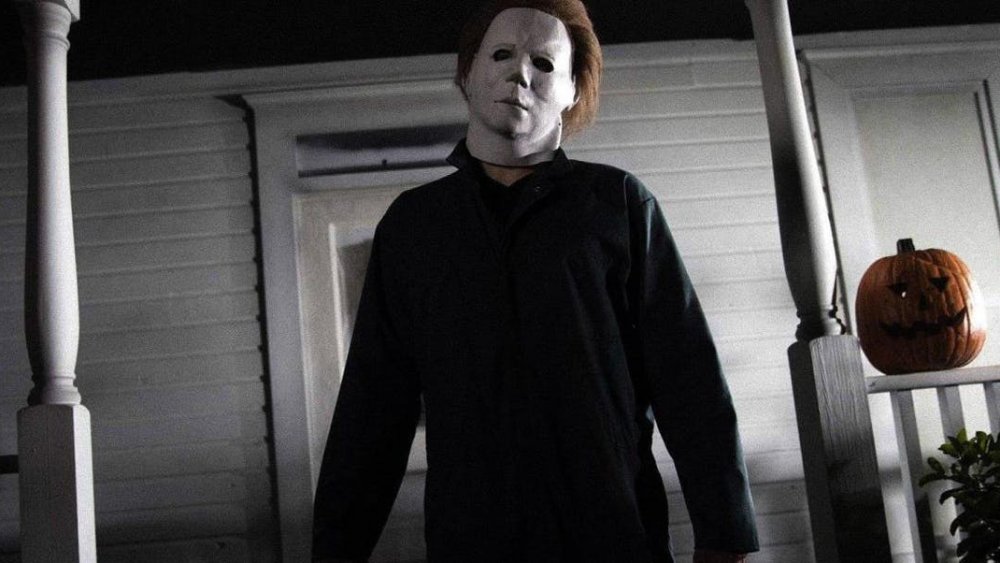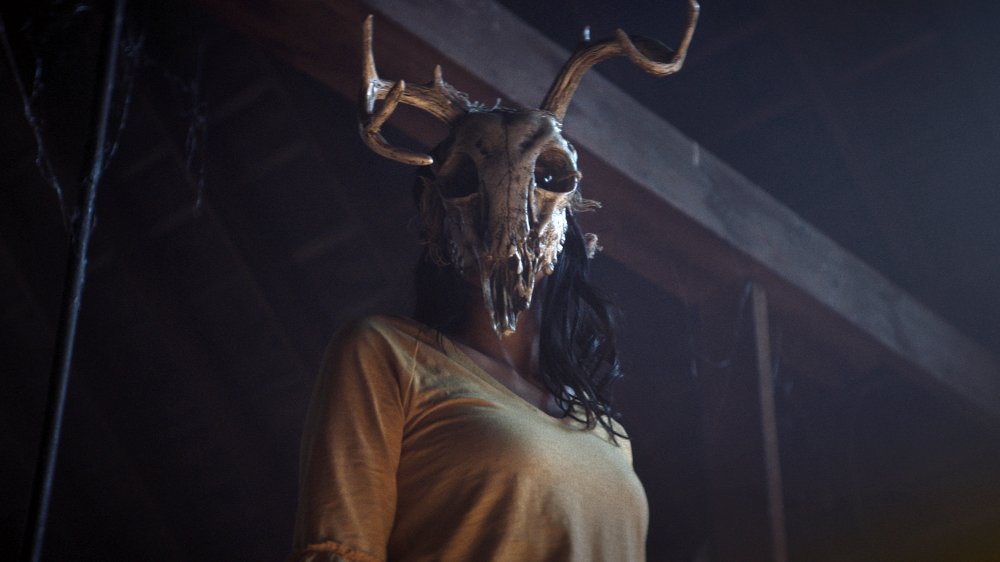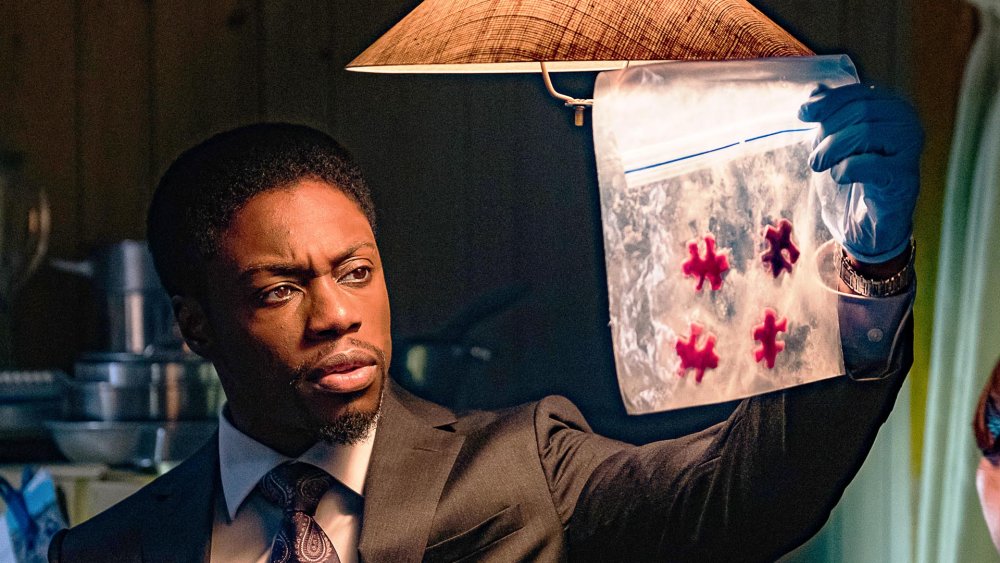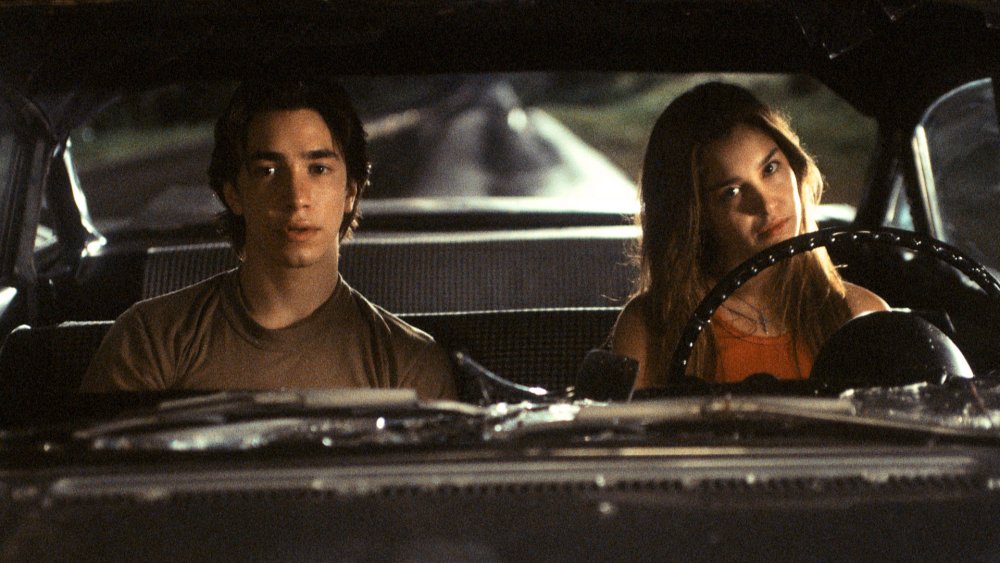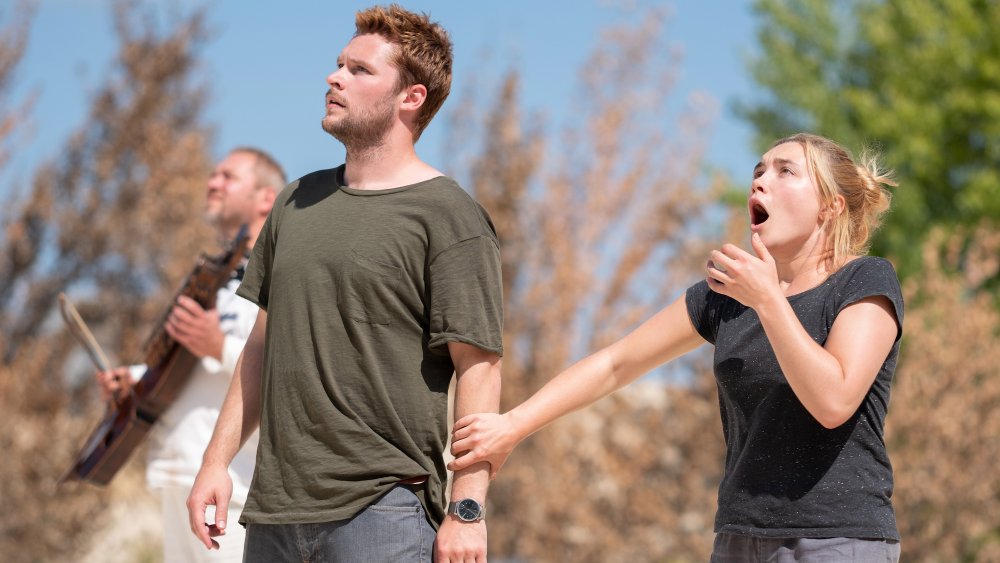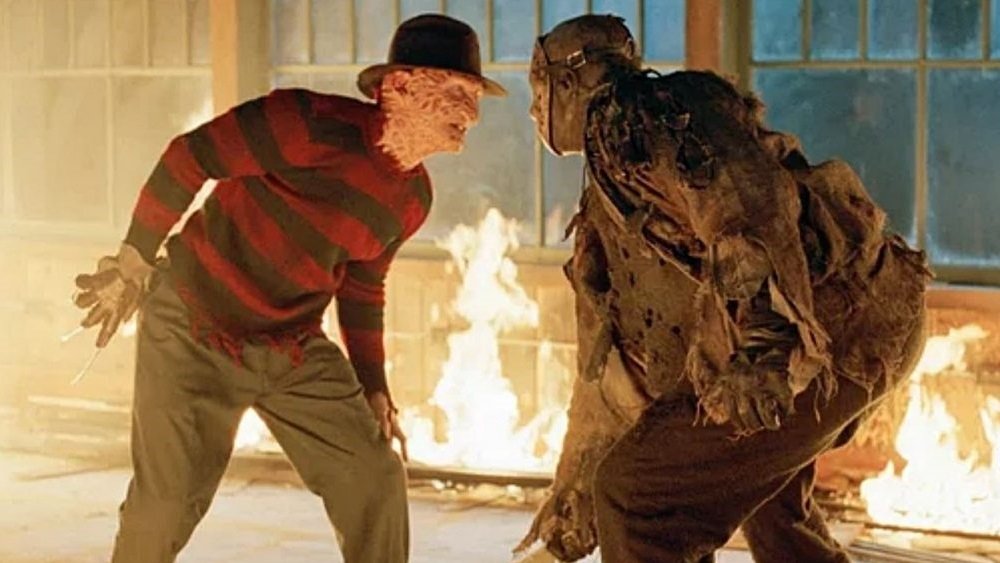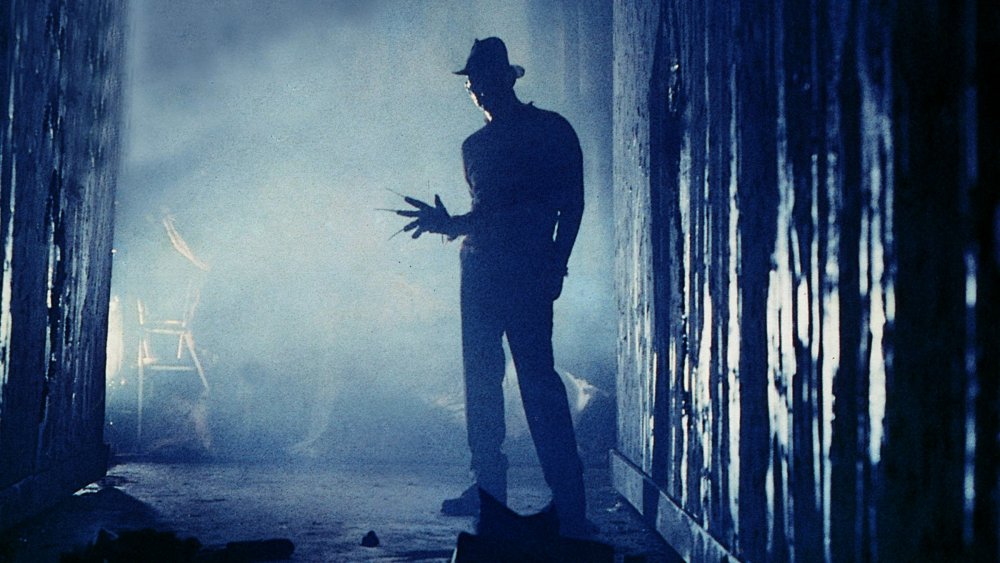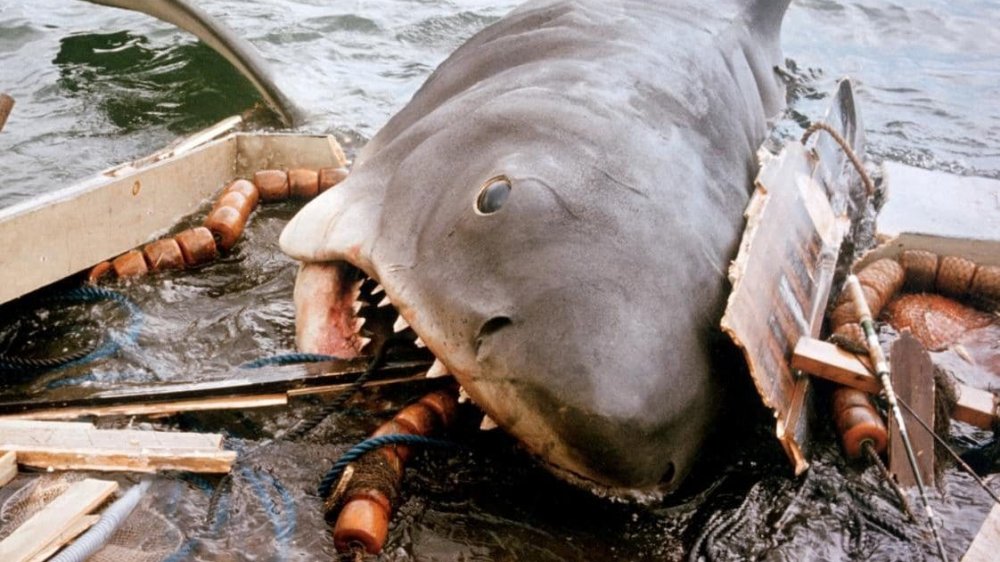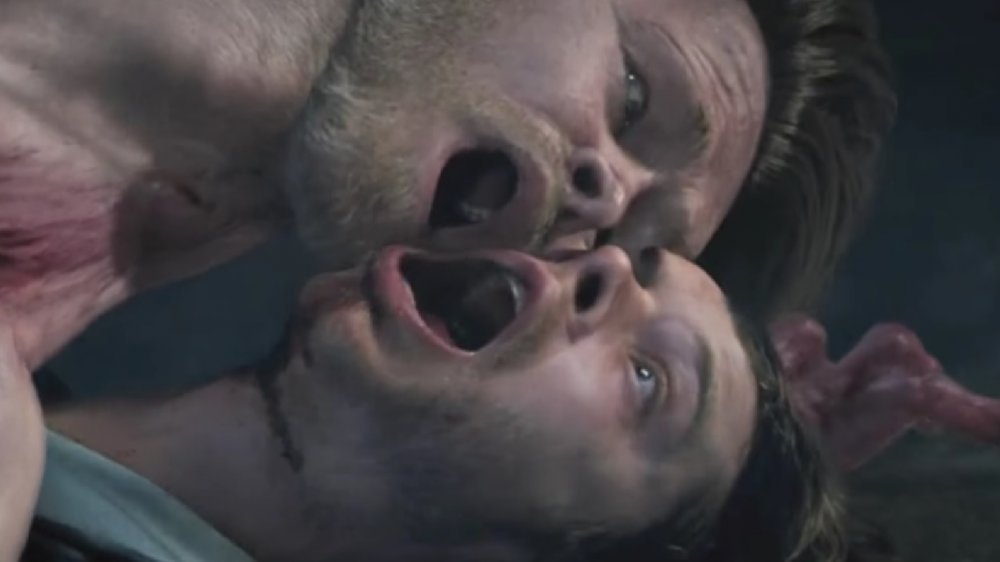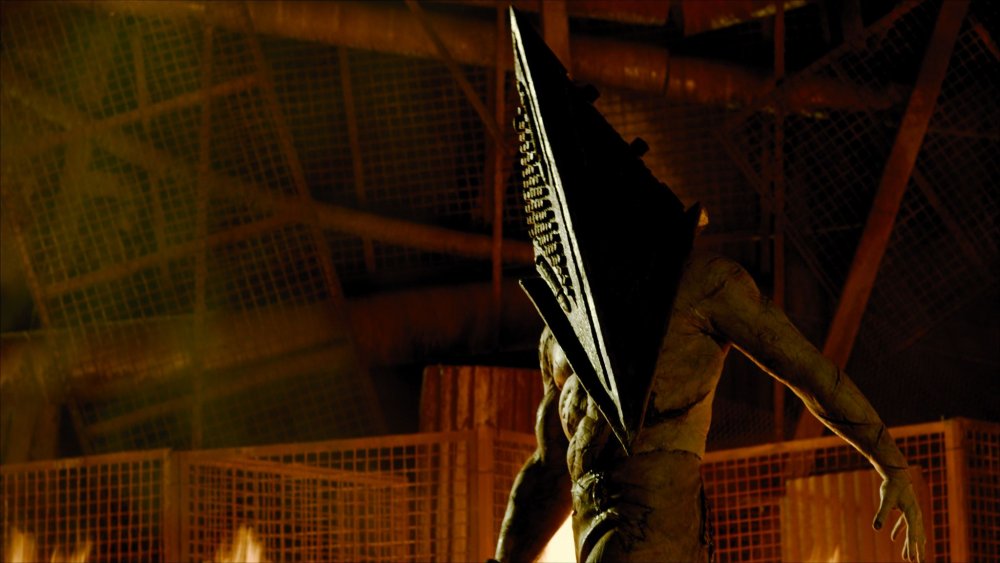What The Directors Of These Horror Movies Hope You Missed
Making movies is hard work. For over a century, Hollywood's publicity machine has carefully constructed an image of filmmaking as a dream factory sprinkled in stardust, but the hard truth is that even the most glamorous films are held together with more duct tape than magic. There is no better proof of this than the number of production mistakes and plot holes that can be found in even the biggest-budget blockbusters and the most widely beloved classics. No matter how many talented artists and craftspeople work on a film, and no matter how closely the work is edited in post-production, errors will still make it into the final cut.
Horror movies are no exception to this. Fans are attracted to these films' directors, their monstrous villains, and the basics of the genre itself. Horror fans are frequently more film-savvy than the average audience member, and tend to have strong opinions about such esoteric topics as lycanthropy lore and the artistic implications of employing practical effects versus digital effects. However, for all of their critical insight, Horror fans are like any other fans: They love what they love, and they're willing to overlook some flaws. And boy howdy, are there flaws to be found in the horror genre. These are the continuity errors, plot holes, and moments of flawed logic horror directors hope you missed — but we certainly didn't.
#Alive's cordless fridge
#Alive dominated South Korea's post-COVID box office before landing on Netflix. Tailor-made for the pandemic era, #Alive depicts a video game live-streamer trying to reconnect with a world ravaged by a zombie outbreak. Like most zombie movies, this is a survival-centric story, where the character's goal is simply to avoid being eaten.
As is standard for this genre, our hero, Joon-woo, barricades himself in his apartment. He does so by pushing the heaviest obstacle in the apartment — his refrigerator — in front of his door. This tactic isn't entirely successful for Joon-woo. The first zombie that comes a-knockin' shoves the fridge aside, and it opens, spilling his precious food supplies. Oddly, though, when the fridge door opens, the interior light comes on ... even though the fridge no longer appears to be plugged in. Perhaps the movie simply fails to show an extension cord — that's a simple enough mistake to make. Barricading your door with your food supply, however, is a worse one.
Us leaves us with questions
Us was Jordan Peele's much-anticipated follow-up to his directorial debut, Get Out. This story of a family being confronted by violent doppelgängers was a massive hit at the box office, and drew heaps of critical praise. Like Get Out before it, the success of Us hinges upon an audacious reveal: In the world of Us, the continental United States is honeycombed with underground facilities in which eerie doubles of US citizens, known as the Tethered, are housed as part of a mind-control experiment.
While this concept makes for cool imagery and some fascinating exploration of the costs of American privilege, the more Us depicts the Tethered mimicking their above-ground counterparts, the less sense any of it makes. What do the Tethered do when their counterparts travel across the country? When and how did they create their matching red jumpsuits, gloves, and shears? Why has the government, having abandoned the experiment, left the Tethered to their own devices?
Michael Myers' many masks
1978's Halloween set the standard for the "unstoppable slasher" subgenre with its enigmatic, mask-wearing menace, Michael Myers. This film launched a franchise, in addition to John Carpenter's career as a horror icon, and has enjoyed compounding praise from critics and fans alike for almost half a century. It isn't, however, without its flaws.
Halloween's most glaring error is one of its most visible: Michael Myers' iconic mask. When our heroine, Laurie Strode, speaks to the Sheriff outside of a burglarized store, he tells her that a Halloween mask was among the stolen items. But as savvy fans have noted, by this point in the film, Myers has already appeared in multiple scenes wearing the mask. Either there is more than one killer, or Myers wears more than one mask. If the latter hypothesis is true, it would clear up several apparent mistakes in the Halloween sequel, H20, in which Myers' mask changes seemingly from scene to scene.
The Wretched's witch has the power to make you forget her powers
The Wretched has the dubious distinction of being a top box office performer in 2020 ... due to most features being pulled from release because of the COVID-19 shutdown. Be that as it may, The Wretched sailed its way to streaming on Hulu on a tide of critical praise, where it has continued to find an audience, despite some holes in its logic.
The antagonist of The Wretched is the Hag, a witch who "feeds on the forgotten," creating a kind of telepathic amnesia that makes people forget her victims ever existed. That is super cool and doubtlessly creepy, but The Wretched is inconsistent in the way it depicts this power. For example, why does everyone forget the existence of Ben's brother, but Abbie's son, Dillon, is only forgotten by his father? Solidly established rules by which a monster's powers work are a must for any horror movie. Being inconsistent with a detail like this really weakens the story — and even cheapens the scare.
Jigsaw's house goes unsearched
2017's Jigsaw takes place nearly 10 years after the demise of the Saw franchise's unforgettable villain, Jigsaw. An old farmhouse owned by Jigsaw's widow features prominently, where the murderer once hosted his psychopathic games. As you might already have guessed, the farm's barn proves to be a still-operational trap, and the bodies of a number of Jigsaw's past victims are later found on the property.
Here's where things get tricky. The film establishes that the events of the preceding movies have been public knowledge for a decade. In fact, the barn and farmhouse are themselves widely known to have been owned by John "Jigsaw" Kramer, whose bizarre modus operandi is well-established enough that he has fans who replicate his work. While this concept allows the franchise to survive without Jigsaw himself, it also strains the all-important suspension of disbelief upon which these movies rest. How could a barn owned by such a notorious serial killer have gone unsearched for 10 years? Did no one seriously think to check if the guy famous for traps had left any in a place he is openly known to have lived?
Jeepers Creepers, where'd you get those plates?
In 2001, slasher horror reigned supreme — until Jeepers Creepers came along, bringing monsters back to horror's center stage. The Creeper has everything a movie monster needs, including a cool signature look: He wears a long coat, a wide-brimmed hat, and drives a spookily rusty pick-up truck.
Jeepers Creepers was a box office hit, breaking the record for a Labor Day weekend opening and holding that record until it was beaten by the opening of Jeepers Creepers 2 in 2003. Success didn't stop the critics or the fans from asking questions, however. Consider this: If the Creeper can fly, why does he drive a truck? And if he's only awake for 23 days every 23 years, when did he have time to go to the DMV and get that vanity plate that says BEATNGU? Perhaps we're thinking too hard about a movie that appears to exist solely to make a jokey reference to a song from 1938, but hey — when you give your movie monster vanity plates, people are going to take notice.
How old can Midsommar's traditions be?
Midsommar, writer-director Ari Aster's much-anticipated follow-up to his stunning debut feature, Hereditary, follows Dani Ardor as she attempts to grieve the tragic loss of her family and save her relationship. She sets out to reconcile with her garbage boyfriend by joining him on a trip to a rural Swedish commune that celebrates a pagan mid-summer festival. Before you can say The Wicker Man, Dani and friends discover that the commune's rituals will cost them all dearly.
Like Hereditary before it, Midsommar is a dense story that unfolds in layers of carefully composed detail. Perhaps this is why some errors and lapses in logic seemed to slip right past the writers, editors, and Aster himself. For example: If the commune only performs this ritual every 90 years, but everyone in the commune dies at age 72, then there isn't anyone alive in the commune who would have firsthand knowledge of the ritual. None of these cultists have followed this tradition before — it's all handed down. Wouldn't that threaten continuity? Sure, tradition is strong, but is it strong enough to survive a complete generational break? Especially when the tradition in question is so utterly at odds with dominant culture?
Freddy vs. Jason vs. continuity
Freddy vs. Jason serves as both the eighth Nightmare on Elm Street movie and the 11th Friday the 13th movie. A showdown between two of horror's most popular monsters, it's a face-off that's theoretically cool but nobody really demanded, and, frankly, never manages to make much sense. Still, it grossed over $116 million worldwide on a budget of $30 million, so maybe it's impervious to logic the way Jason is impervious to, well, pretty much everything.
That brings us to the part that the filmmakers would rather you forget: Since Jason can't seem to die physically, Freddy has to use Jason's fears against him in his dreams. This is awesome in concept, but writers Damian Shannon and Mark Swift decided that former drowning victim Jason is phobic about water. Makes sense ... until you remember he has never had an issue with water in any of his previous 10 films.
How to escape Freddy Krueger
A Nightmare on Elm Street elevated the slasher subgenre to a new level by introducing Freddy Krueger, a monster who takes vengeance from beyond the grave on the children of the vigilante mob that killed him. By attacking his victims in their nightmares, Freddy is practically omnipotent. As a result, the Nightmare on Elm Street films boast some of the most creative and truly surreal scares of their era. But this also means they have some of the most tangled logic around.
For instance, the first time that Nancy dreams of Freddy's boiler room lair, she intentionally burns herself on a steam pipe to wake herself up. If pain wakes you from a dream, wouldn't it be impossible for Freddy to kill you with his trademark knives? Wouldn't the first slice wake you right up? Even if we choose to believe that it is only self-inflicted pain that wakes a sleeper, that seems like a flaw that could be exploited more often. The moment Freddy attacks, all anyone would need to do is stub their own toe, and poof, they'd be awake and safe!
How do you forget a face like Ben Gardner's?
Jaws is a beloved classic that manages to be an almost perfect movie. Key word: almost. Much of the action of the first half of the film centers on Chief Brody trying to convince the Mayor to close the beach to prevent further shark attacks. After discovering Ben Gardner's boat adrift, Brody and Hooper theorize that the boat was damaged by the shark, but they fail to impress the Mayor as they have no hard evidence.
At no point, for some reason, do they mention finding Ben Gardner's severed head, which seems like a glaring error in Brody's police work, even if it wouldn't have prompted beach closures. This error falls squarely on the shoulders of Steven Spielberg, who added the shot of the severed head after principal photography had wrapped. The jump scare it creates adds energy to the scene, but it also punches a hole in the side of the plot.
Here's the thing about The Thing
2011 saw the release of a sequel to the 1982 classic The Thing, entitled ... The Thing. Yeah. If that wasn't confusing enough, the movie's climactic reveal is — spoiler alert — that it's actually a prequel. Many hardcore fans hated the movie sight unseen, and it ended up being a commercial flop, grossing less than $32 million on a $38 million budget. That's a shame, because the reveal we just spoiled is actually handled pretty well, and there are several tense and inventive scenes that indicate this could have been a worthy successor.
However, there is one small but pivotal flaw in the movie's logic that ruins the climax: Kate tells Carter that she knows he is his human self because of his earring, but Carter reaches for the wrong ear, confirming to Kate that he is not really Carter. This breaks the established logic that the Thing imitates its victims by absorbing their memory. It's a small problem, but an absolutely crucial one that goes right to the heart of the film's horrific logic.
Perhaps the Brethren should have remained silent
Some might say that it's unfair to hold the sequel to a movie adaptation of a video game to a high standard. There are so many balls to keep in the air when it comes to bringing a long-running series in a different medium to the big screen, after all. But when it comes to detailed worldbuilding and the development of internal logic, video game adaptations actually have the advantage, given that they work from ostensibly well-designed source material. Somehow, the Silent Hill movies still fall on their (pyramidal) face.
The mega-popular Silent Hill video game franchise has spawned 11 installments across multiple platforms that explore ever-deepening lore about the creepy town of Silent Hill. Somehow, however, the film series adapted from these games only lasted two installments, and still failed to create a consistent world. In the 2006 film Silent Hill, a cult known as the Brethren is introduced as fanatical Christian extremists who burn witches. In the 2012 film Silent Hill: Revelation, however, that same cult worships a dark deity that they intend to bring into our world. Sure, villains can change their motivations, but such an extreme change in mission merits some explanation that the audience never gets.
